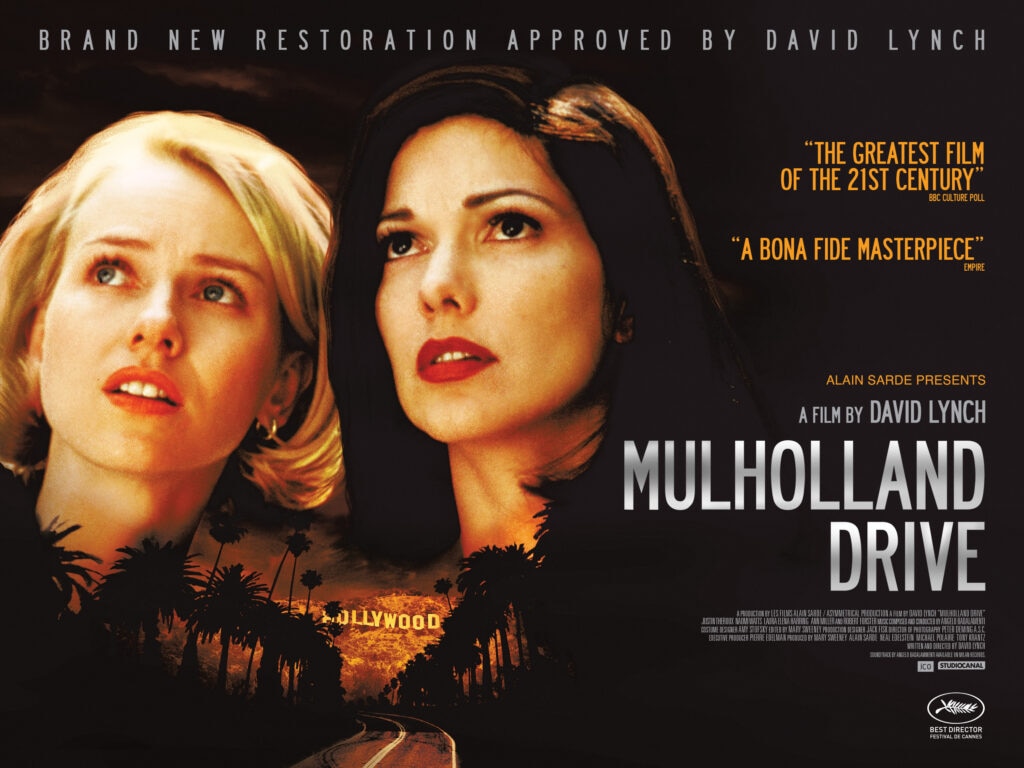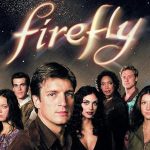Mulholland Drive (2001)

“Mulholland Drive,” released in 2001, is a neo-noir psychological thriller that stands as one of David Lynch’s most celebrated works. Renowned for its enigmatic narrative and haunting visuals, the film intertwines themes of identity, desire, and the darker side of Hollywood, creating an immersive experience that leaves viewers questioning the very nature of reality. With its intricate plot and dreamlike atmosphere, “Mulholland Drive” challenges traditional storytelling and invites a deep exploration of the subconscious.
The film begins with a car accident on the titular Mulholland Drive, which serves as both a physical location and a metaphorical pathway into the labyrinth of dreams and identity. A woman, later known as Rita (played by Laura Harring), survives the crash but suffers from amnesia, unable to remember her name or past. She is discovered by Betty Elms (played by Naomi Watts), an aspiring actress who has just arrived in Los Angeles with dreams of stardom. The two women form an unlikely alliance as they embark on a quest to uncover Rita’s identity, leading them down a dark and twisted path filled with mystery and intrigue.
David Lynch masterfully crafts the film’s narrative structure, seamlessly blending elements of dreams and reality. The first half of “Mulholland Drive” presents a relatively coherent story, filled with suspense and a sense of discovery. However, as the film progresses, the lines between reality and illusion begin to blur. Lynch employs surreal imagery, fragmented storytelling, and nonlinear timelines, creating a disorienting experience that mirrors the characters’ psychological states. This narrative ambiguity invites multiple interpretations, compelling audiences to engage actively with the film’s deeper meanings.
One of the most striking aspects of “Mulholland Drive” is its exploration of identity. The film delves into the complexities of self-perception, particularly in the context of Hollywood and the entertainment industry. Betty, with her bright-eyed optimism and ambition, represents the idealistic view of fame, while Rita’s mysterious persona embodies the darker, more troubled aspects of that same world. As their relationship evolves, so do their identities, with each woman reflecting the other’s desires, fears, and insecurities. This duality raises profound questions about the nature of identity: Are we defined by our experiences, or are we shaped by the roles we play in the eyes of others?
The performances in “Mulholland Drive” are nothing short of extraordinary. Naomi Watts delivers a powerful portrayal of Betty, capturing the character’s innocence and vulnerability as she navigates the treacherous waters of ambition and desire. Laura Harring’s performance as Rita is equally compelling, embodying the complexities of a woman trapped between past trauma and the yearning for self-discovery. Their chemistry drives the emotional core of the film, heightening the tension and sense of mystery.

Another notable element of the film is its cinematography, crafted by Peter Deming. Lynch’s visual style is characterized by striking compositions, contrasting colors, and a meticulous attention to detail. The use of lighting and shadow enhances the film’s eerie atmosphere, creating a sense of foreboding that permeates each scene. The iconic blue box and the haunting diner sequence serve as visual motifs, symbolizing the intersection of dreams and reality, while also adding layers of meaning to the narrative.

Lynch’s score, composed by Angelo Badalamenti, complements the film’s unsettling tone. The haunting melodies and atmospheric sounds contribute to the dreamlike quality of “Mulholland Drive,” heightening the emotional impact of key scenes. The music serves as a narrative device in its own right, guiding the audience through the emotional landscape of the characters and amplifying the film’s surreal atmosphere.

The ending of “Mulholland Drive” is one of its most discussed aspects. The final act shifts dramatically, leading to an ambiguous conclusion that has sparked countless interpretations and theories. Many viewers are left pondering the significance of the events that unfold, questioning what is real and what is illusion. This ambiguity is a hallmark of Lynch’s work, inviting audiences to embrace the uncertainty and engage in a deeper exploration of the film’s themes.

In conclusion, “Mulholland Drive” is a masterful exploration of dreams, identity, and the darker undercurrents of Hollywood. David Lynch’s distinctive style, combined with exceptional performances and a haunting score, creates a surreal experience that lingers long after the credits roll. The film’s intricate narrative and visual richness encourage viewers to delve into its complexities, sparking discussions and interpretations that continue to captivate audiences. As a seminal work of modern cinema, “Mulholland Drive” challenges us to confront the nature of reality and the many facets of our identities, leaving an indelible mark on the landscape of film.











